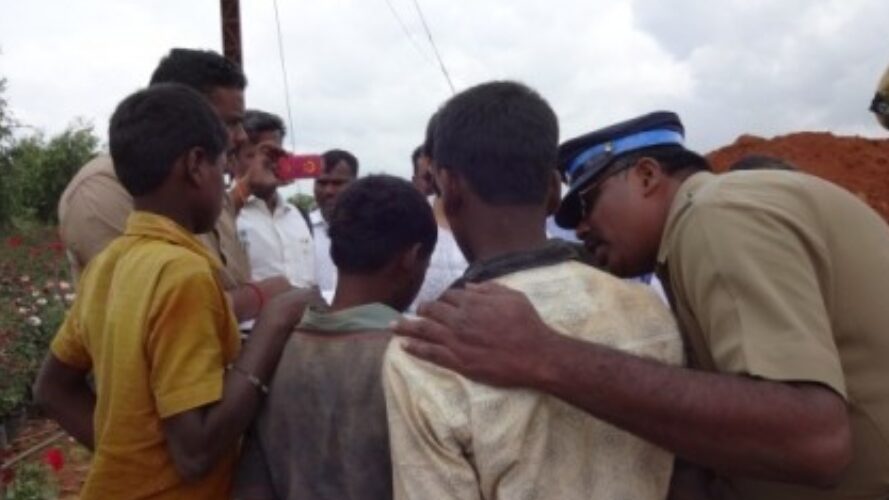Four Boys Rescued from Slavery on a Rose Farm
Slavery
Child Slaves, Beaten for Making Mistakes
Their days began at 5 a.m. While most children set out for school, these boys started watering 4,000 rose plants on the farm. They would mix sand, water and manure to refresh the soil around the plants, then pick the roses from the thorny bushes. Most days they worked about twelve hours; though there were busy seasons when they stayed up well past midnight loading cut roses onto big delivery trucks.
The boys shared how they were beaten if they made any mistakes—like over-watering a bush or breaking a plant. The two newer boys were beaten more since they weren’t as familiar with the routine. They said the owner use sticks and his own fists to reinforce the rules.
One of the boys said he had run away, but was tracked down, brought back and beaten. Another boy shared how he hurt his leg while working. When he asked the farm owner for money to visit the hospital, he told the little boy to rub manure on the wound to heal it.
Rescue Operation Brings Freedom
When IJM learned about the rose farm, they took the evidence to district authorities. The next day, on Friday, July 11, they mobilized a rescue team. These authorities had been trained by IJM on the laws against forced labor slavery, and the official in charge assured IJM of his team’s preparedness: “We have trained all of the officials. They should know what to do."
It was late morning and the boys were hard at work when the rescue team arrived. Within fifteen minutes, they boys had answered questions, packed up their few belongings and were on their way to the government office. An IJM staff member and a police official rode with the boys to the police station. During the ride, the boys were a little confused but obviously relieved. They kept saying how they didn’t want to go back to the farm.
The boys answered more in-depth questions at the government office. They had been working on the farm to pay back a loan their parents had taken from the owner. But after years of work, it was clear that this was not a short-term arrangement. The boys were barred from going to school and working 12-plus shifts a day. The owner had promised to give the boys mobile phones, clothes, and money, but those promises were never fulfilled. They were slaves.
At one point, an official asked a boy if he wanted to go back to work at the farm. His answer was definitive: “No, I will never go back there. I don't like it there.”
Restarting Childhood
It was clear the boys had been held as slaves. That afternoon, as government officials prepared release certificates that emancipate them from slavery and protect them from the farm owner, IJM staff helped the boys’ parents make their way to the government office.
The children were so happy to see their parents at the government office. The head official encouraged the families and the boys to go to school and made arrangements for them to do so.
The next day, the government officials brought representatives from a nearby school to help the boys understand what life would be like in school. IJM will be working with the boys as they adjust to this new life with new rhythms and new hopes and opportunities.
Signs of a Broader Change
The officials also made sure the families had a place to stay for the night. These small but significant acts are signs of a broader change in attitudes toward ending forced labor slavery and seeing it as a crime.
When IJM first started working in Bangalore, it took nearly two years for the first government official to issue a release certificate, let alone make extra provisions for a rescued slave or arrest a suspected trafficker. This case showcases a government leader treating the boys as victims of a real crime, taking the first steps to hold the suspected owner accountable, and offering proactive support to help the children seek restoration.
The boys will join IJM’s two-year program for rescued slaves. IJM’s team of social workers will create individualized care plans to help the boys adjust to school and find tutors to catch up.